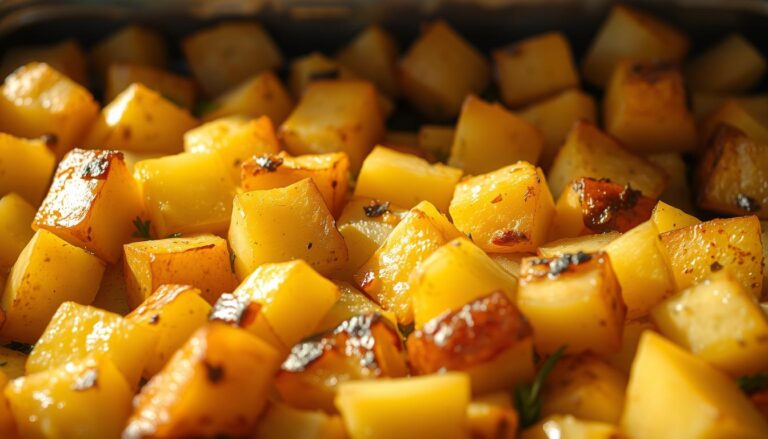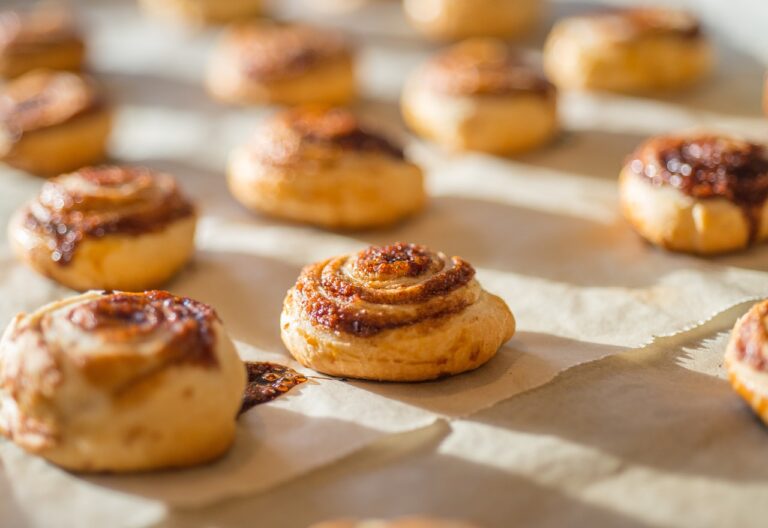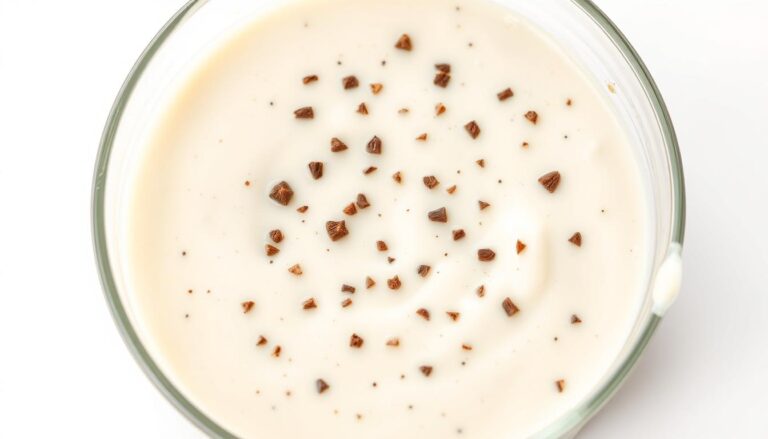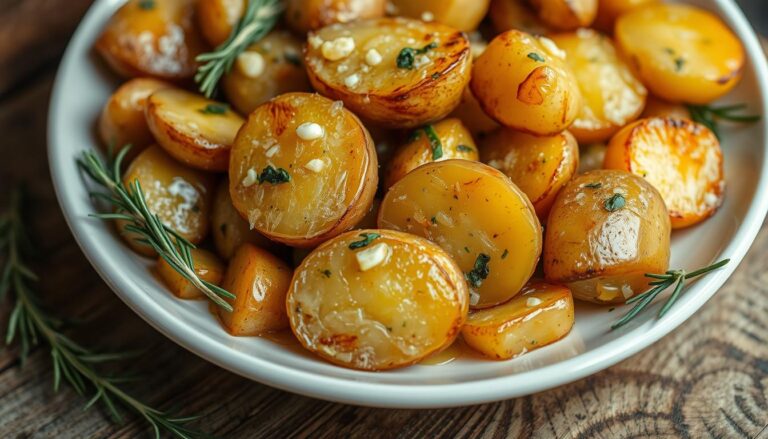Creamy Cheese Sauce Recipe: Easy & Delicious
Table of Contents
Are you craving a rich, velvety cheese sauce? It can turn simple meals into something special. This homemade cheese sauce recipe is a game-changer for anyone who wants to make their dishes better with little effort.
Making the perfect cheese sauce is easier than you think. You only need eight ingredients and 10 minutes to prepare. This will give you a smooth, creamy sauce that you’ll use all the time.
Want to drizzle it over pasta, use it as a dip, or top nachos? This versatile homemade cheese sauce is perfect for adding flavor to any dish.
Key Takeaways
- Quick and easy cheese sauce recipe takes only 10 minutes
- Requires just 8 simple ingredients
- Versatile sauce for multiple dishes
- Perfect for pasta, vegetables, and snacks
- Can be stored in the refrigerator for 3-4 days
Understanding the Basics of Perfect Cheese Sauce
Making a tasty cheddar cheese sauce starts with knowing the basic ingredients and techniques. Whether you’re making a classic Velveeta cheese sauce or a homemade version, understanding the basics will improve your cooking skills.
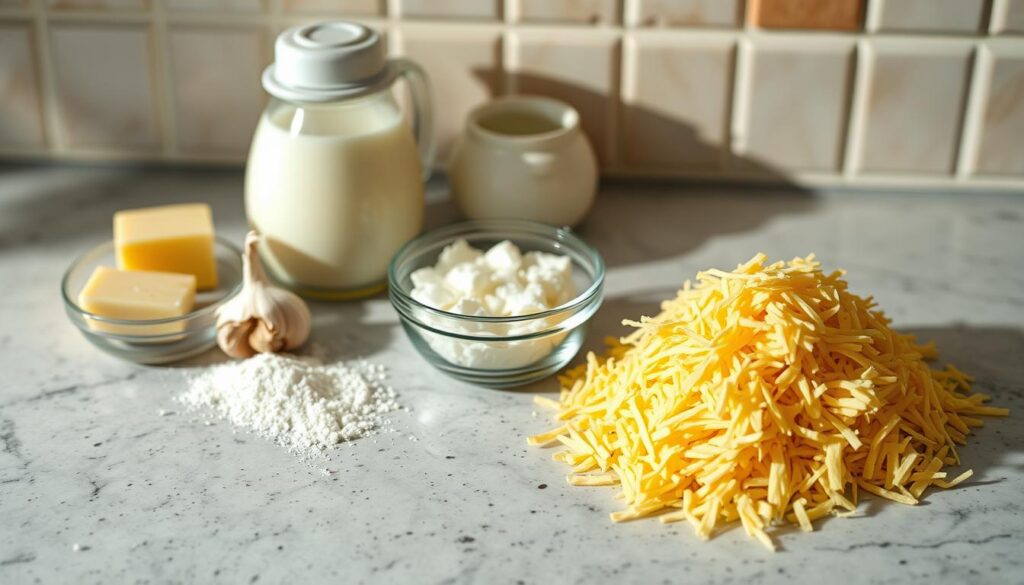
Before we get into the recipe, let’s look at what makes a cheese sauce great. The right ingredients and tools can turn a simple dish into a creamy, delicious treat.
Essential Ingredients for Your Sauce
Your cheese sauce starts with key ingredients that blend to create a smooth, rich texture:
- Butter (2 tablespoons): Adds richness and helps make a smooth base
- All-purpose flour (2 tablespoons): Thickens the sauce and makes a roux
- Whole milk (1 cup): Adds creaminess and blends ingredients well
- Medium cheddar cheese (6 oz or 1.5 cups): Gives a classic cheese taste
- Seasonings: Salt and chili powder for extra flavor
Kitchen Tools You’ll Need
Get your kitchen ready with these essential tools for the perfect cheese sauce:
- Medium saucepan
- Whisk
- Grater (for fresh cheese)
- Measuring cups and spoons
Types of Cheese to Consider
While cheddar cheese sauce is a classic, you can try different cheeses. Velveeta cheese sauce has a smooth texture, and medium cheddar has a sharper taste. Mixing cheeses can help you create a unique sauce.
Pro tip: Pick cheeses that melt well for a silky smooth sauce.
Cheese Sauce Recipe: Step-by-Step Guide
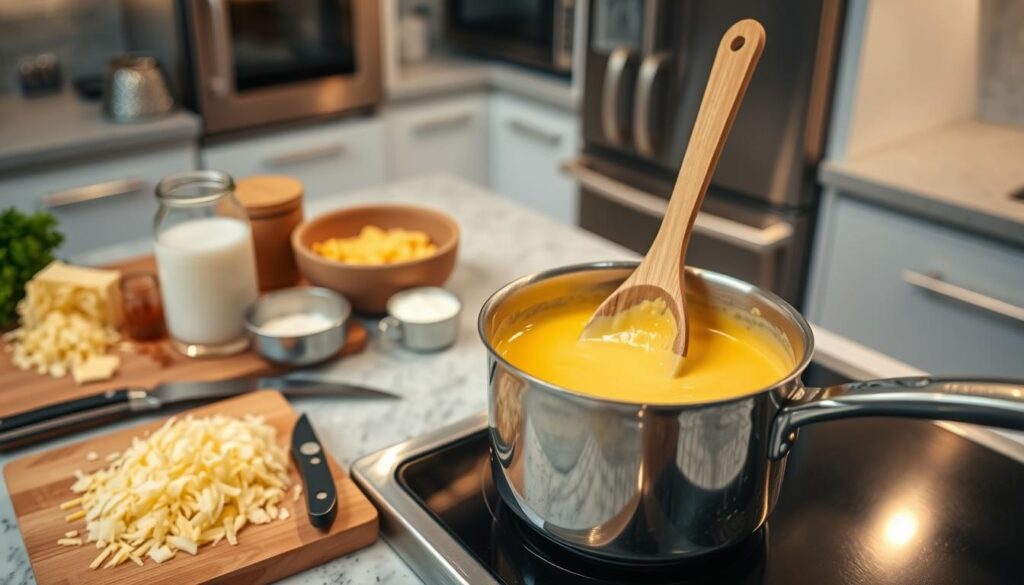
Making cheese sauce is simpler than you might think. This recipe uses a roux base to create a creamy sauce. It’s perfect for enhancing any dish. Follow these easy steps to make a sauce that rivals restaurant quality.
First, gather your ingredients. You’ll need:
- 4 tablespoons unsalted butter
- 1/3 cup all-purpose flour
- 3 cups whole milk
- 2 ounces Gruyère cheese, grated
- 2 ounces Parmesan cheese, grated
- Salt and pepper to taste
The secret to a great cheese sauce is controlling the heat and whisking well. Start by melting butter in a medium saucepan over medium heat. Then, add flour slowly, stirring constantly. This step prevents lumps and gives a smooth texture.
Next, pour in milk slowly while whisking. Keep whisking until it thickens. Simmer for about 10 minutes, until it reduces by 20%. When it coats the back of a spoon, it’s ready. Remove from heat and add your grated cheese, stirring until it’s fully melted.
- Melt butter
- Add flour to create roux
- Incorporate milk
- Simmer and reduce
- Add cheese
- Season to taste
Your homemade cheese sauce is now ready to enhance pasta, veggies, or any dish. Tip: Serve it right away for the best texture. Or, store it in the fridge for up to 5 days.
Making the Perfect Roux Base
Creating a smooth cheese sauce starts with mastering the roux. This basic technique is key for rich, creamy textures in your queso dip and cheese sauce. Learning the basics can take your cooking from good to great.

A perfect roux needs careful attention to ingredients and technique. You’ll need equal parts butter and flour – usually 3 tablespoons of each. The goal is to cook the mixture carefully to get rid of raw flour taste without burning it.
Mastering the Butter-to-Flour Ratio
The right butter-to-flour ratio is crucial for your cheese sauce’s thickness and smoothness. Here’s what to do:
- Use 3 tablespoons of unsalted butter
- Add 3 tablespoons of all-purpose flour
- Whisk continuously for 2-3 minutes
- Cook on medium-low heat
Common Roux Mistakes to Avoid
When making your cheese sauce or queso dip, avoid these common mistakes:
- Cooking roux at too high a temperature
- Not whisking constantly
- Allowing flour to burn
- Skipping the initial cooking time
Pro tip: Your roux should smell nutty and look golden, but not brown. This means it’s ready for your delicious cheese sauce.
Best Cheese Selections for Smooth Melting
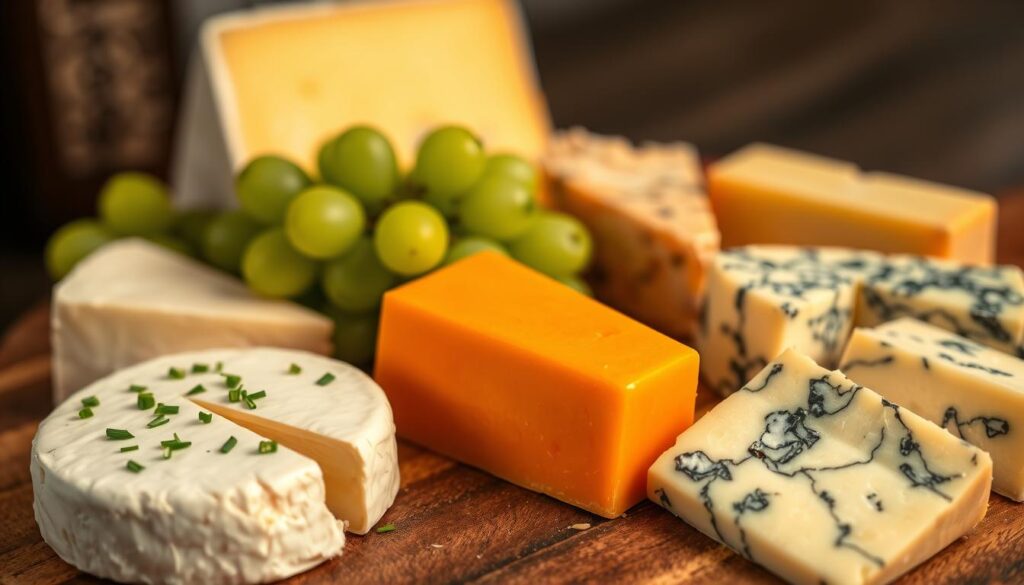
Creating the perfect cheese fondue or cheesy sauce for pasta starts with selecting the right cheese. Not all cheeses melt equally, so choosing wisely can make or break your dish.
When crafting a smooth cheese sauce, medium cheddar stands out as a top performer. Its balanced moisture content helps create a silky texture that coats pasta beautifully. Sharp cheddar can become grainy, so stick with mild to medium varieties for the best results.
- Monterey Jack: Exceptional melting properties
- Gruyère: Adds depth and complex flavor
- Fontina: Creates a rich, creamy base
- Cream cheese: Enhances overall smoothness
For a truly memorable cheese sauce, consider blending multiple cheeses. A combination of Monterey Jack, medium cheddar, and colby creates a balanced flavor profile that will elevate your pasta or cheese fondue.
Pro tip: Avoid pre-shredded cheeses. They’re coated with cellulose, which can prevent smooth melting and create a grainy texture. Always grate your own cheese for the best results.
Experiment with different cheese combinations to find your perfect sauce. Whether you’re making a classic mac and cheese or a sophisticated cheese fondue, the right cheese selection makes all the difference.
Tips for Achieving Silky Smooth Texture
Making the perfect nacho cheese sauce or mac and cheese sauce is all about technique. The secret to a smooth cheese sauce is knowing how temperature, stirring, and ingredients affect it.
Temperature Control Techniques
When making cheese sauces, controlling the heat is key. Take your pot off the heat before adding cheese to avoid overheating. Overheating can make cheese proteins break down, leading to a grainy texture.
- Use low to medium-low heat when melting cheese
- Stir constantly to distribute heat evenly
- Add cheese gradually to maintain smooth consistency
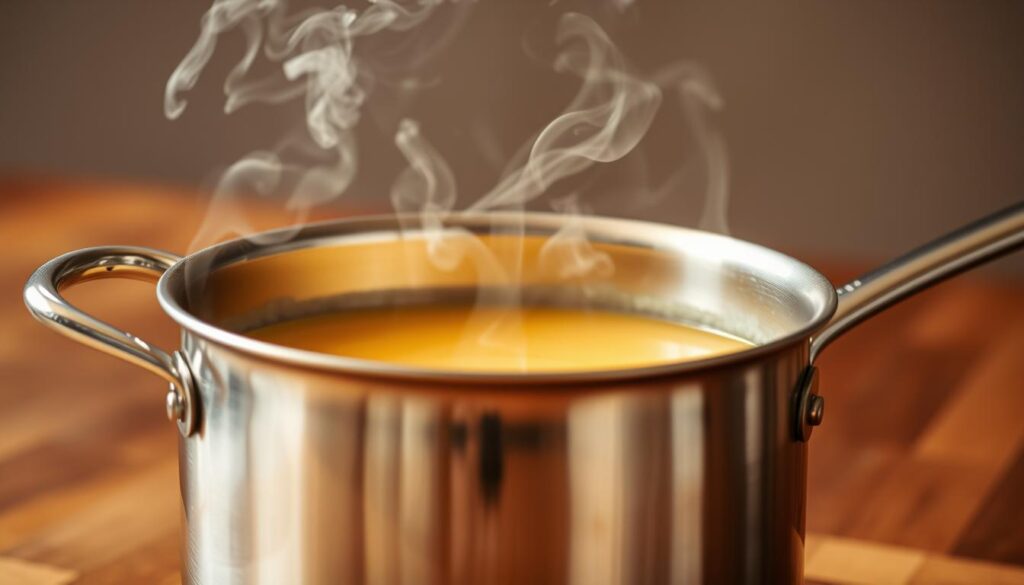
Preventing Grainy Texture
A grainy cheese sauce can ruin your dish. To get a silky smooth nacho cheese sauce, pick high-quality cheeses that melt well. Stay away from pre-shredded cheese, as it often has additives that mess with melting.
Proper Stirring Methods
Stirring is an art when making cheese sauces. Use a whisk or wooden spoon to mix cheese slowly and evenly. Start with a roux base of flour and butter to keep your sauce stable and prevent it from separating.
- Whisk continuously while adding cheese
- Add cheese in small batches
- Blend thoroughly to eliminate lumps
By using these techniques, you’ll make a creamy, velvety mac and cheese sauce. It will impress anyone who tries it.
Customizing Your Cheese Sauce Flavors
Your homemade cheese sauce recipe doesn’t have to be boring. With a few creative additions, you can turn a classic cheese sauce into a flavor-packed culinary experience. It will excite your taste buds.
Spice lovers can kick up their cheese sauce recipe with exciting ingredients. These ingredients bring new dimensions of flavor. Consider these delicious customization options:
- Pepper jack cheese for a spicy twist
- Diced green chiles for southwestern flair
- Garlic powder for robust depth
- Ground cumin for smoky undertones
- Smoked paprika for additional complexity
When crafting your homemade cheese sauce, experiment with different cheese combinations. Combining sharp cheddar with mild Monterey Jack can create a more nuanced flavor profile. For those seeking adventure, try mixing in blue cheese or aged Gouda for unexpected taste sensations.
Temperature and technique matter when customizing your sauce. Add spices gradually and taste as you go. Remember that fresh, high-quality ingredients will always produce the most delicious results in your chese sauce recipe.
Pro tip: Start with small batches when experimenting to perfect your unique cheese sauce without wasting ingredients. Your culinary creativity can transform a simple sauce into a memorable dining experience.
Storing and Reheating Instructions
Making the perfect cheese sauce is just the start. Knowing how to store and reheat it keeps it creamy. Whether for nachos, pasta, or veggies, storing it right is crucial.
For storing your homemade chese sauce, pick the right container. An airtight one keeps the flavor in and prevents contamination. You can refrigerate it for up to four days, perfect for enjoying it over and over.
Proper Storage Containers
- Use glass containers with tight-fitting lids
- Opt for BPA-free plastic containers with sealed tops
- Avoid leaving the sauce in open bowls
- Cool the sauce completely before storing
Reheating Methods That Work
Reheating chese sauce needs gentle care to keep it smooth. Warm it slowly and add a bit of liquid if it’s too thick. Both microwave and stovetop methods work well if done right.
- Microwave method: Heat for 1-2 minutes, stirring occasionally
- Stovetop method: Warm over low heat, stirring constantly
- Add 1 tablespoon of milk if the sauce seems too thick
- Avoid overheating to prevent graininess
Pro tip for keeping cheese sauce creamy: Reheat at a low temperature and whisk often. If it starts to separate, a quick whisk can fix it.
Common Troubleshooting Tips
Making the perfect cheddar or Velveeta cheese sauce can be tricky. Even top chefs face challenges. Knowing how to fix common problems will help you make a smooth, tasty sauce every time.
Here are the most frequent issues you might encounter when preparing cheese sauces:
- Sauce becomes too thick: Whisk in warm milk gradually to thin out the consistency
- Sauce turns grainy: Remove from heat and whisk vigorously
- Separation of ingredients: Reduce heat and stir constantly
- Lack of flavor: Add extra seasonings or use high-quality cheese
When making cheddar cheese sauce, watch the temperature. Pre-shredded cheese can have additives that change its texture. For the best results, grate your own cheese right before using it. Velveeta chese sauce melts more smoothly because it’s processed.
Temperature control is key. Always melt cheese on low heat to avoid breaking or graininess. If your sauce separates, take it off the heat. Whisk in a bit of cold milk or butter to mix it back together.
- Pro tip: Keep your chese sauce warm but not hot by using a double boiler or lowest heat setting
- Stir continuously to maintain a smooth consistency
- Use fresh, high-quality cheese for the best flavor and texture
Remember, practice makes perfect. Each time you make a cheese sauce, you’ll get better at spotting and fixing problems.
Serving Suggestions and Pairings
Your homemade nacho cheese sauce is incredibly versatile. It can transform countless dishes. Whether you’re looking to elevate a simple pasta meal or create a crowd-pleasing appetizer, this mac and cheese sauce serves multiple culinary purposes. The key is experimenting with different ingredients and discovering unique flavor combinations.
For pasta lovers, mac and cheese sauce becomes the ultimate comfort food. Try pairing your creamy sauce with elbow macaroni, shells, or penne for a classic experience. Roasted Poblano peppers or crispy bacon can add exciting texture and depth to your traditional mac and cheese recipe. Kids and adults alike will appreciate the rich, cheesy goodness that makes this dish a holiday party favorite.
Vegetable dipping opens up another delightful dimension for your nacho cheese sauce. Crisp green beans, roasted cauliflower, and fried squash become irresistible when dipped in this creamy concoction. For a healthier twist, consider serving the sauce alongside grilled chicken drumsticks or as a complement to halibut steaks, creating a balanced and flavorful meal.
Don’t let leftover sauce go to waste! Transform it into mac & cheese bites, use it as a topping for pulled pork, or create a quick appetizer with pretzel dogs. From Soul Food-inspired dishes to gluten-free options, your versatile cheese sauce can adapt to numerous culinary styles and dietary needs.



